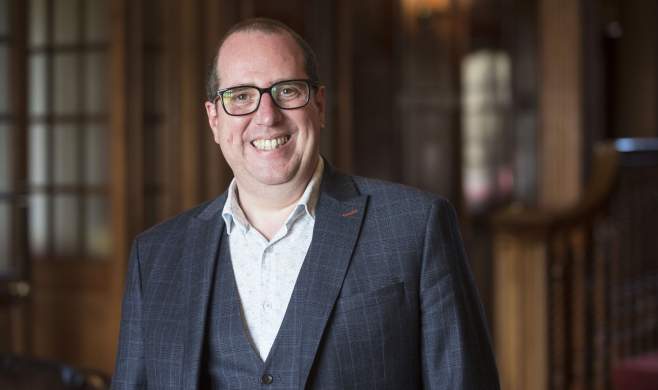Creating a deeper understanding with Values-Based Leadership
Written by Simon Whitbread
By Simon Whitbread, Leadership Development Director, Windsor Leadership
One of the topics that is regularly discussed on our programmes is the impact that our values can have on our leadership style. Values have become a regular part of organisational culture, having a greater or lesser effect, depending on how well they are implemented and the perceived connection between the stated values, and those living them on a day-to-day basis. But when developed and communicated well, values can significantly impact the organisational culture and its ongoing effectiveness, as they can help individuals engage with an organisation on a deeper, more emotional level. Importantly, a leader’s or organisation’s values can also become the lens or mechanism through which they make all their decisions and actions.
Yet a common error that organisations make when it comes to choosing their values is that they pick words that sound good, but don’t take the time to understand what they really mean or explore the complexity of them. Values need to go beyond the words, creating a deeper understanding of what those words represent in terms of behaviours, approaches, and policies.
Exploring complex values
As an illustration of how complex a person’s values can be, I’d like to share my reflections on one of my values, the notion of being positive. Often, when people think about being positive, they only focus on an optimistic mindset that can be disconnected from the reality of the situation. It is considered that those who value being positive are upbeat and enthusiastic, but only view things through rose-tinted glasses. The reality is that positivity is much more complex than that and can be much more powerful.
Firstly, being positive for me is about having a positive outlook, which influences every aspect of how you view situations and people. When we look at a situation, we often choose between two points on a spectrum, one framed positively and one framed negatively. Being positive means leaning toward the positive choice. These are just some of the choices we make, consciously or not.
- Strengths, not weaknesses
- Solutions, not problems
- Hope, not fear
- Growth, not decline or stagnation
- Towards, not away
- Abundance, not scarcity.
It is not that I ignore or am blind to the negative aspects, but I choose to put my energy and focus on the former to help create a better, more positive working environment.
Secondly, it’s about making positive assumptions. To begin with, we must acknowledge what an assumption truly is; an assumption is when we create a viewpoint or decision based on only partial or little information. It’s about what we don’t know, not what we do. So, when making any assumptions, we have to choose whether to side with a cautious, negative, or even cynical approach or whether to choose a braver, more positive, and optimistic slant. When leading or working with people, we make assumptions about them all the time. We make assumptions about people’s motives, actions, attitudes, abilities, or even knowledge. Often, these assumptions and the resulting behaviour can affect the outcomes in an unintended way. For example, when you think about someone’s motivations, a positive assumption is to assume that when people act or speak, they are doing so with the best of intentions, and this can certainly change how we view or hear other people.
We use expressions like giving someone the benefit of the doubt a lot more than we actually do it. In my experience, when you make positive assumptions about people, more than often, they want to and do rise to the challenge. Looking at things with a positive outlook can also mean we get less frustrated when people do fail or slip up; we find reasons for why they might have done so, rather than attributing it to their attitude or mindset. They’re just having a bad day, or they just misspoke, making it much easier to accept it.
However, the reverse is often true that if we think negatively, then we not only notice their undesirable behaviours more frequently, but we also get more frustrated by them, because it can seem wilful and deliberate even when it is not. Too often, we have given extra meaning to someone's behaviour or words because we have wrongly made a negative assumption about them.
The third way in which we can be more positive is in our use and choice of language. In the same way that people can make assumptions about what people mean by adding intent to their words, we can often add meaning to them, by choosing to frame things in a certain way. I know someone who is often described as being impatient; however, their outward signs of impatience come from a good place. They are passionate, enthusiastic, action-oriented and keen to get on with work. These are all strengths and are only frustrating to others when they are overdone or overused. Helping someone to recognise when their actions are misunderstood, rather than criticising them for being impatient, is a better and more positive way of developing them. People are much more likely to respond in a way we would like them to, when we use positive and encouraging language.
The final way of being positive is by using positive methodologies; various strategic development and leadership tools start from a position of positivity. Whether it is ‘appreciative inquiry’, ‘asset-based community development’ or a positive approach to talent management, these techniques often build upon the first three ways I have described being positive. If you take talent management, for example, it starts with the assumption that everyone has talent, and part of a leader’s responsibility is to discover that talent and deploy it in the best way. It uses positive language to describe people at different stages of their development, so even when someone is in the wrong role and not performing well, they are still only described as mismatched talent instead of untalented.
The importance of embodying your values
There’s much more that I could say about being positive, but this will have given you a sense of just how rich one personal or organisational value can be.
Over the past decade, employees have increasingly wanted to work in organisations they can relate to and be proud of. The lived-out values of that organisation can be an important part of this. If they are not well thought through, it can lead to problems in staff recruitment, talent retention, and the discretionary effort that individuals make each day. After all, if you don’t understand the depth behind a value, it could be seen as tokenistic, making it difficult to truly live and breathe it. So, as we often say at Windsor Leadership, take some time out to reflect on your values, and how your leadership style reflects those of your organisation and self.
Disclaimer:
The views expressed in Blogs, Articles, Podcasts and Videos posted on Windsor Leadership’s website and social media channels, remain the opinions of the individuals and do not necessarily represent the views or opinions of Windsor Leadership. Windsor Leadership does not accept any responsibility for the accuracy of the information shared. We hope however that the views prove to be useful in reflecting on the challenges of leading today.

